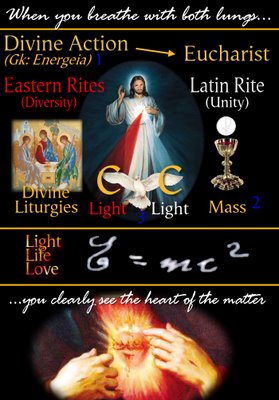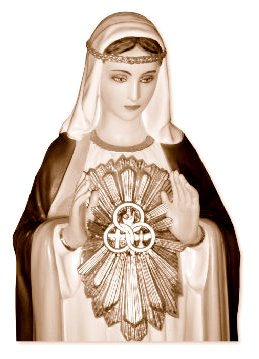J.M.J. + O.B.T. + M.G.R.*
http://www.st-michaels.org.uk/sermonOct19.pdf
YOU CANNOT SEE MY FACE
Sung Eucharist
Trinity XVIII
St Michael, Cornhill
Sunday October 19th 2014
On the very last day of December 1879, that is Old Year’s Night as the Scots would call it, Thomas Edison made the first demonstration of the incandescent lamp. With dramatic showmanship he lit up an entire street in Menlo Park in New York, the district in which his laboratories were situated. The demonstration was an enormous success. Thousands of people were bussed out to see this new wonder of the world; lights twinkled in a dazzling way. Perhaps the most remarkable fact of all was that it seemed like something out of nothing. After all in the past, light came from candles or oil burning. Even lighting came from a substance you could smell – or even hear hissing. But Edison produced light from electricity – you could not see, smell or hear it. You had to take it on trust almost that it was there.
In the past century and a half, with the rapid development of modern science many similar reflections abound. Albert Einstein’s work on relativity showed matter and time to be related: E=mc2 is the great equation, with insights that led to the harnessing of nuclear energy. James Clerk Maxwell helped us understand electromagnetic radiation – and others indicated that light radiation can be measured as both a wave formation and a particle. When one tries to measure it, light morphs from one to the other – wave to particle, particle to wave and so on. All these discoveries have induced the best philosophers of science to a greater humility in understanding scientific theories. Theories are effectively the best hypotheses for explaining our experience and observations with the evidence we have available at present.
But in some ways none of this humility, or uncertainty is new in our understanding of our world. Our three fascinating readings are clear indications of this. We began with Moses ascending the holy mountain in the hope of a vivid, perhaps even a visual encounter with God. We have been up that mountain with Moses already in the past few weeks. But our reading today was very explicit. Let me remind you: ‘Moses said: “I pray thee show me thy glory.” God’s reply to Moses sets the scene for all generations: ‘And God said: “I will make all my goodness pass before you, and will proclaim before you my name…But you cannot see my face; for man shall not see me and live.”
There is no doubting the power or presence of God in the story. Far more dazzling than Edison’s lights in Menlo Park! But Moses learnt that God is not just one other being like one of us. Any attempt to make God so leads to the road of idolatry. St Paul sharply but positively proclaims this in our second lesson. Addressing his Thessalonian friends, he reminds them of ‘how they turned to God from idols, to serve a true and living God.’ The implication is plain. The true and living God cannot be described in human terms. That is the road to idolatry.
Throughout the Old and New Testaments the nearness of God is proclaimed, but our God is a God who hides himself. Mark’s Gospel, the earliest gospel in the New Testament, has Jesus, time and again, talking in terms of secrecy. Even when the women discover the empty tomb and learn of Jesus’ resurrection, we read: ‘...trembling and astonishment came upon them; and they said nothing to anyone for they were afraid.’ Dramatically these four words conclude Mark’s Gospel: ‘for they were afraid.’ What an ending to any story!
Over the Christian centuries, there grew up a noble tradition of accepting what we could not know of God. Only by analogy, only by using imagery could we come close to saying something of God. There even grew up theological terms to describe this truth. So called apophatic theology focuses on the unknowable aspects of God. This approach was given the name, the Via Negativia, the way of negation. The greatest mediaeval theologian, Thomas Aquinas, who produced millions of words about God, on his deathbed, said of all he had written: ‘I count all this as so much straw.’ What an extraordinary pronouncement! What can be said about God, then?
But what seems at the outset to be minimalist, even discouraging, turns out to be the very basis of theology. For this requires us to find image after image, picture after picture to refer to God. The Old Testament does so continuously - from our reading today about Moses – all the way through the Psalms and the Wisdom literature. In the New Testament, the teaching of Jesus about God is so often in parables, in stories telling of the ways of God.
The danger of seeking a precise picture of God is very great. We reduce God to an inflated human being. So in the Gospel story, Jesus tells the Jews to render unto Caesar the things of Caesar and to God the things of God. This is not just about money. It goes far deeper. For Roman religion was Emperor worship. This church is built on the site of such a temple. It was idolatry, worshipping Caesar. Jesus shows God to be beyond all imagining. When the Romans conquered Jerusalem, they entered the Holy of Holies, in the Jewish Temple and found it to be an entirely empty room. God is greater that all this.
We began with science and our inability to trap an electron or picture a light wave. How remarkable it is to see that our understanding of the reality of God parallels and even underpins a proper view of modern scientific theory. God said: ‘I will be gracious to whom I am gracious but you cannot see my face.’
Amen
Sincerely yours in Jesus through Mary,
Mike Rizzio
Imitate Mary
Become like Jesus
Live for the Triune God
Seek the Light of Our Lord Jesus Christ
See you on the High Ground!
* - J.M.J. + O.B.T. + M.G.R. stands for:
Jesus, Mary and Joseph;
O Beata Trinitas;
St. Michael, St. Gabriel and St. Raphael






























No comments:
Post a Comment